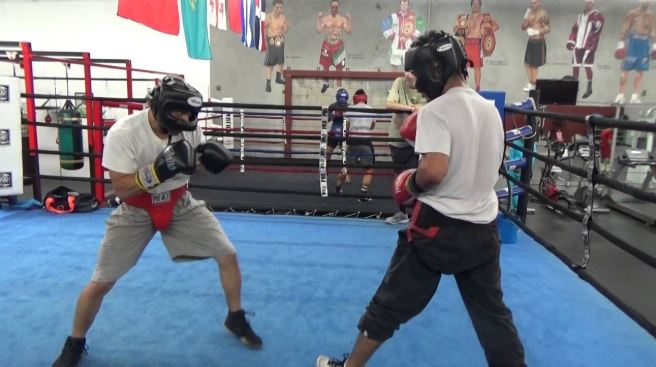Sports has often been described as a religion. As Kenyan writer Wahome Mutahi once put it, ‘When my team wins, I rise to the heavens in joy, but when we lose, I possess the very ire of the devil.’ The late writer was referring to football (soccer matches) where a lifelong rivalry between Gor Mahia and AFC Leopards would often end in riots and property damage. In recent years, the rivalry has turned friendly, with their matches locally branded Mashemeji Derby (shemeji is Swahili for in-law).
Elsewhere in the world, rivalry in tennis is far from friendly, especially the infamous one that pits Serena Williams against Maria Sharapova. While pop culture frequently cites this trope, statistics suggest it’s not quite an even match – seeing as Serena has defeated Sharapova in 18 of their 21 encounters (as at June 2018). True rivalry requires a balanced result that could go either way, and that sets relatively equal players in terms of skill, experience, and wins.
Cubism vs Fauvism
Sometimes, the comparison is drawn from a cultural standpoint. For example, artists Pablo Picasso and Henri Matisse are often cited as friendly rivals. Being the two top art creators of their time, they regularly attended each other’s shows and visited one another’s studios even though they were in direct competition. Matisse called their rivalry a ‘boxing match’ and it continued even after he died. The artists inspired each other to better work even as their respective fans sparred over who was the bigger talent. Picasso admits it was Matisse showing him an African sculpture that put him onto cubism.
In the sporting world, rivals don’t necessarily make each other better, though they can. They will often follow one another’s careers and perform a kind of one-up-man-ship. Because of modern media, this friendly competition will play out in TV interviews and social media digs. Pundits and commentators fan the flames by constantly comparing the rivals, often in minute detail. They highlight similarities and differences that make the story juicier. Why? Rivalry sells tickets, as both sets of fans try to outdo the other side.
Growl for the camera
The boxing word is driven by passion and bravado. Opponents aim to intimidate each other right from the weigh-in, with shows of dominance and macho shoving – even among female fighters. So boxing rivalries rarely look friendly, regardless of the individual boxers’ feelings towards each other. Back in the early 1900s, one such rivalry was between Jim ‘The Boilermaker’ Jeffries and Jack Johnson, the Galveston Giant. Jeffries was the world heavyweight champion, and he was white. Johnson was a star in the black boxing circuit who wanted a go at the title.
Unfortunately, many white fighters – Jeffries included – wouldn’t get in the same ring with blacks, not even to spar. Jeffries didn’t agree to fight Johnson until five years after he (Jeffries) had retired undefeated. Heavyweight champion Tommy Burns lost his title to the Giant in 1908. In 1910, Jeffries finally agreed to a bout in Reno, Nevada. He lost after 15 bloody rounds, and said “I could never have whipped Johnson at my best. I couldn’t have hit him. No, I couldn’t have reached him in 1,000 years.” Jeffries’ acceptance of Johnson’s boxing superiority could be seen as ‘friendly’ acquiescence of defeat, and recognition of skill.
Beauty and the beast
Race doesn’t always play apart. One popular rivalry that was far from friendly was the Muhammad Ali – Joe Frazier dichotomy. These two were opposites in every way, which made their rivalry all the more delicious – for the fans at least. Ali was known for being ‘pretty’ and he frequently called Frazier ugly, gorilla, or Uncle Tom, insults that would hold a whole different meaning if they came from across race lines. Their styles were polar as well. Ali preferred head shots and antics that entertained the crowd. He was a real performer. Frazier favoured body punches and power over speed and showboating.
They had three bouts in total. Frazier won the first, while Ali won the other two, including the Thrilla in Manilla. On their first meet, both boxers were undefeated, and it was billed as the Fight of the Century. It lasted 15 rounds. Despite their seemingly violent enmity, Frazier said Ali brought out the best in him, describing him as, “…one helluva man, God bless him. He is the greatest fighter of all times, next to me.” Meanwhile, Ali described fighting Frazier as, “… the closest I’ve ever come to dying.”
Read Also:




